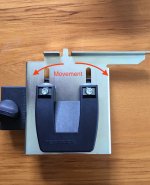DrD
Member
- Joined
- Mar 29, 2013
- Messages
- 390
I'll go out on a thin limb here based upon my experiences. Technique. If precision cuts are desired, precision technique must be employed. I keep a hand plane handy to "dress up" the intersection of cut and joined boards. I have found that hand position, ever so slight changes in grip angle, grip pressure, direction of push or pull relative to the cut line, all will affect and effect the precision of the finished cut. This is the difficult part.
We work with wood (which has movement related to stress relief, humidity, temperature, etc), in a basically semi to uncontrolled environment, so our expectations of precision should match the situation. Repeatability would seem to be more important than precision.
We work with wood (which has movement related to stress relief, humidity, temperature, etc), in a basically semi to uncontrolled environment, so our expectations of precision should match the situation. Repeatability would seem to be more important than precision.

